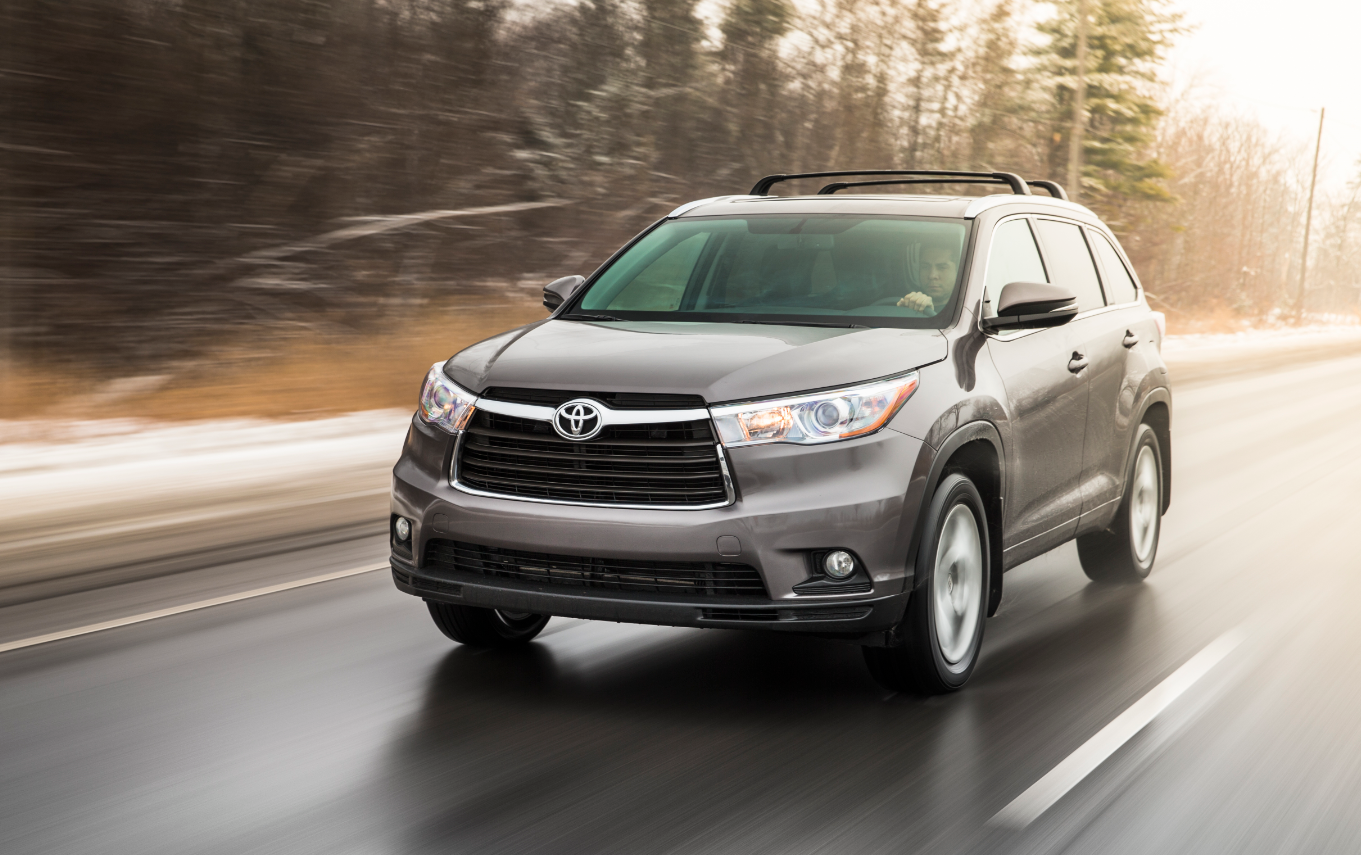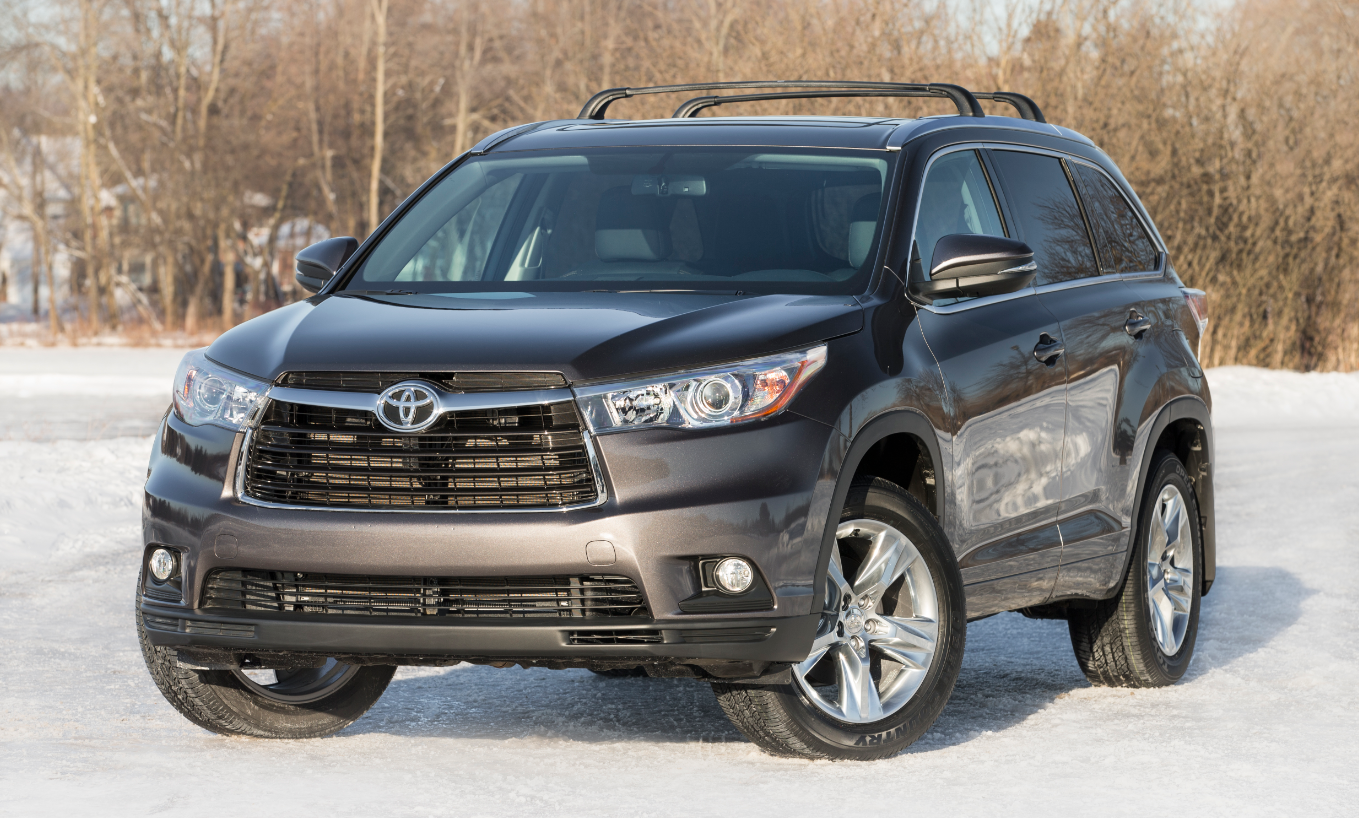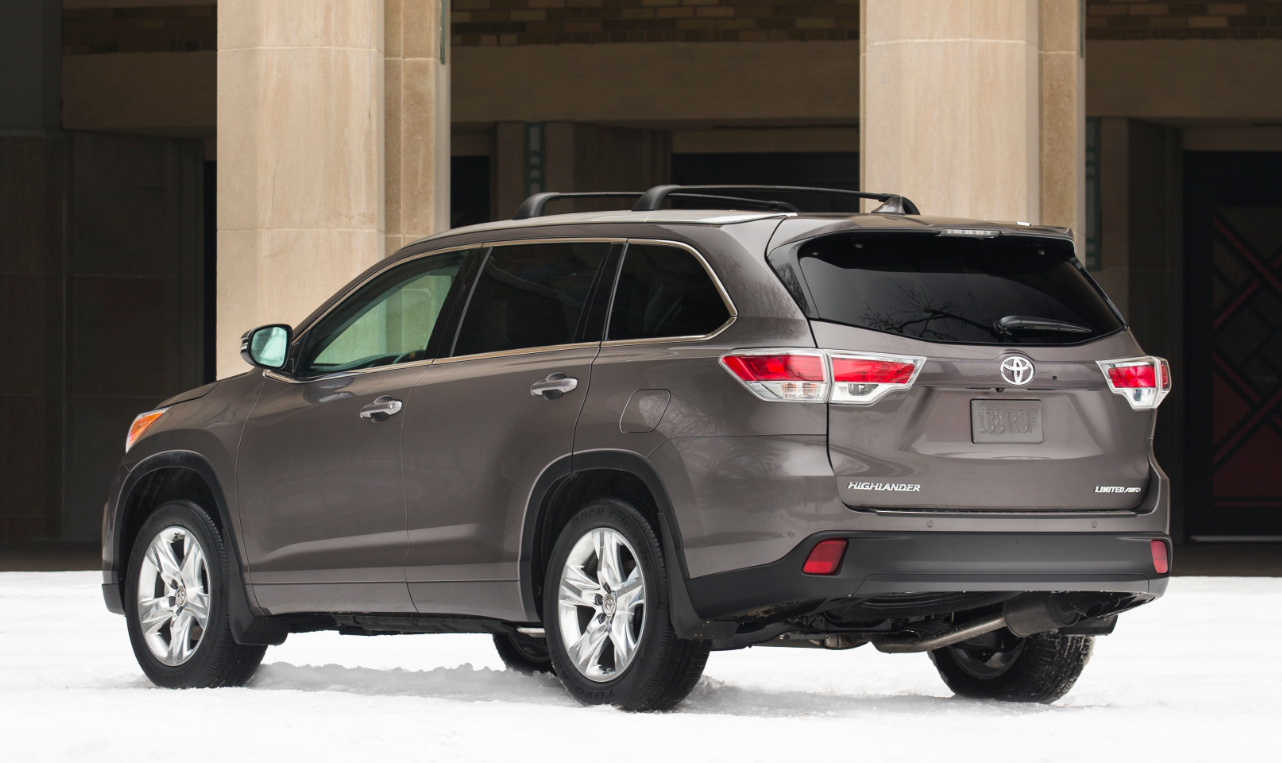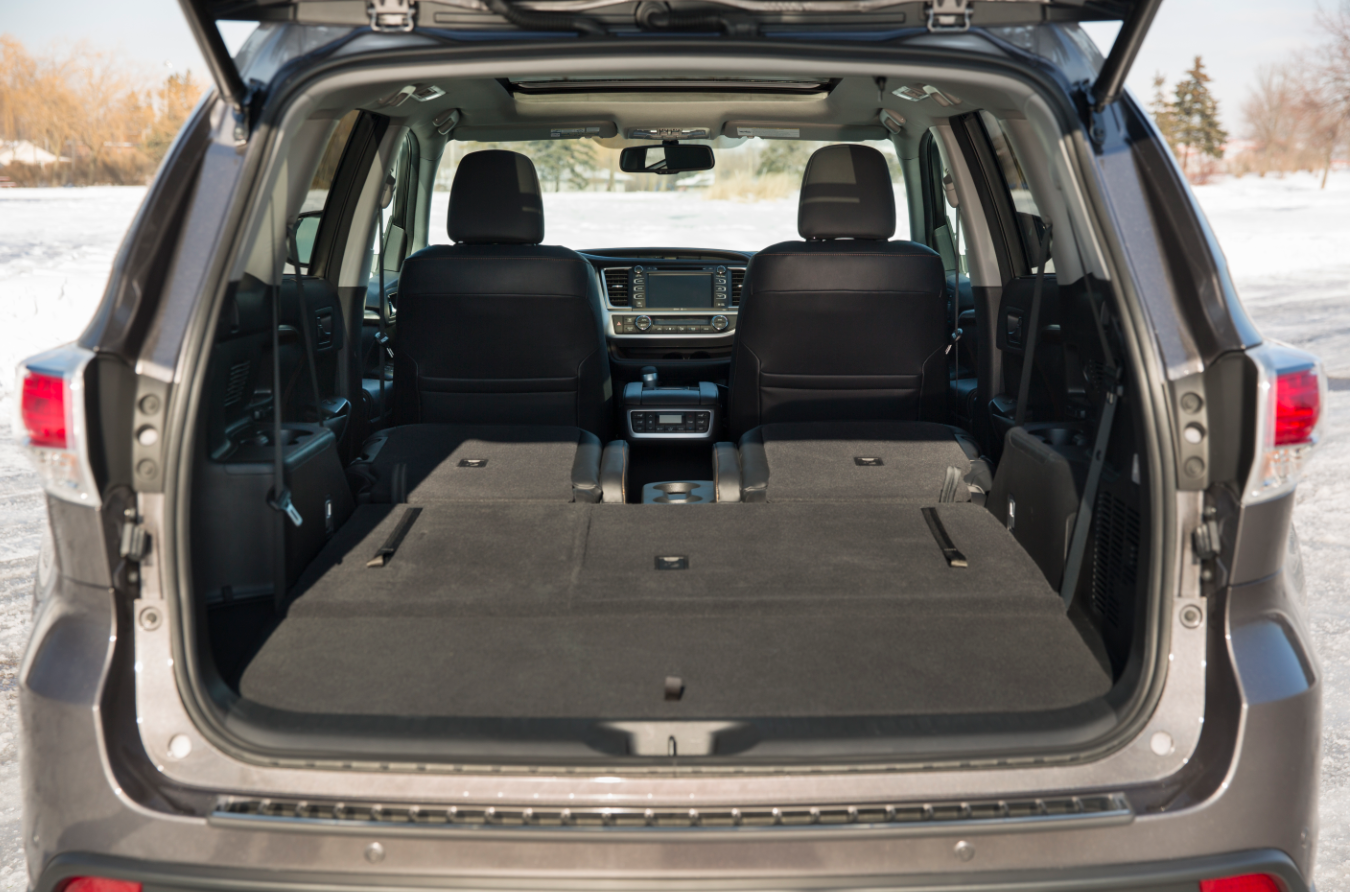2014 Toyota Highlander – What We Like and Dislike
- Written by Rishi Rajan
- Published in CAR REVIEWS
- font size decrease font size increase font size
- Be the first to comment!

The Highlander has until now been one of Toyota’s most successful SUVs here in North America. But with its aging design and competition in full swing, Toyota headed to the drawing board to develop a new model.
Although the Highlander has continuously outsold competitors like the Pathfinder and Pilot, its conservative styling screamed soccer mom. So for 2014, Toyota took a different approach – making the Highlander bolder and more defined than its predecessor.
I had a chance to test drive the Highlander Limited, and came away quite surprised with how this family mover has evolved into a macho-looking miniature monster truck. The base model comes with the following features:
-3.5 litre V6 engine with direct injection
-270 hp and 248 lb.-ft. of torque
-six-speed automatic transmission
-Front wheel drive
-18-inch wheels
-6.1-inch touchscreen and 3.5-inch multi-information display
-Back-up camera
The Limited model we tested adds the following features, among others:
-19-inch wheels
-Leather seats
-8-inch touchscreen and 3.5-inch multi-information display
-3-zone climate control
-Parking sensors with cross-traffic alert
-Heated front and second row seats
REAL WORLD FUEL COSTS
Stated range of full tank: 413 km
Actual range of full tank: 393km
Conditions: 40% city/60% highway – Climate controls off, Radio on, Display on, Conservative acceleration
Fuel economy: 14.2 L/100km (combined)
Fill up costs: $78 at the rate of $1.30/liter (regular unleaded)
LIKES
Unique design
Although Toyota is known for making modest changes to their vehicles and touting them as completely redesigned (ahem, Camry), the Highlander has gone through a complete overhaul. With its bold and macho redesign, it looks like a sexier version of the bigger Sequoia. The headlights are narrow and stretch out generously across the front. Each headlight cluster is complemented with a projection beam lamp and a chrome eyelid.

The big grill runs deep, accented with a chrome stripe and a big Toyota emblem. The wheel arches are wider and more defined, giving it a monstrous appearance. The base 17” wheels have been upgraded to 18” alloys. The interiors have been upgraded as well with hints of luxury from every seat. The front is abundant with soft touch materials throughout the dash and a standard touchscreen.

Bigger dimensions
While its width stays the same, the new Highlander is almost three inches longer than the outgoing model. Buyers now have the ability to choose between a seven-seat and eight-seat configuration – each with its own advantages and disadvantages. The seven-seater model sports two captain chairs in the middle row and a bench seat in the third row.
The eight-seater model features a bench seat in both the second and third rows. The added length is quite apparent in the interior space, and makes it more humane to sit in the third row – although it is still intended for small children.

Sharp performance and handling
The only engine choice offered in Canada is a 3.5-litre V6 engine, while Americans get a 2.7-litre four-cylinder base engine. The V6 engine provides 248 lb.-ft. of torque that’s on par with others in its segment with direct injection really helping it deliver brisk acceleration. It can reach 100 km/h from a standstill in less than 7.5 seconds.
The bigger wheels coupled with a soft suspension provide a comfortable ride on the notoriously bumpy Gardiner Expressway during my weekly commute. The chunky steering feels very light for a vehicle of its size. Body roll is minimal when tested on a 90-degree bend at speeds of 110 km/h. Also notable is the 270-hp rating, which is more than the Pathfinder and Pilot, but less than the 290-hp Ford Explorer.
DISLIKES
Overstated fuel economy
Toyota claims the Highlander is capable of achieving 11.5 L/100km in the city and 8.2 10 L/100km on the highway – for a combined rating of 10 L/100km. While I wasn’t expecting to receive these numbers for obvious reasons, I came out not impressed with a 14.2L/100 km combined rating after a week comprised of approximately 50/50 city/highway driving. I’m not upset about the fuel economy, as most of its competitors achieve similar numbers. It’s just a bit disappointing to see the large gap between the stated numbers and the real world results.
Clicking intermittent wiper
Although I am nit-picking here, it should be noted that the intermittent wiper is rather unusual. When turned on, it makes two clicking sounds – once when it swipes across the windshield and once more when it returns back. With the radio off, this would be annoying enough to drive any obsessive compulsive person off the wall. The only workaround is to switch the wiper to the normal setting rather than the intermittent one.
